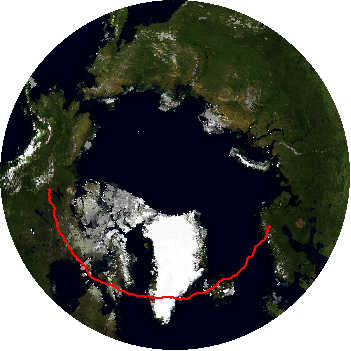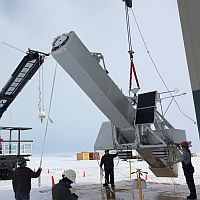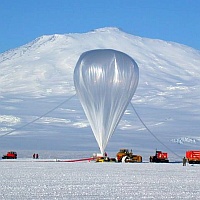News Archive
Articles of the month
-
November, 28 2016
BACCUS: 1st. experiment launched in Antarctic campaign

McMurdo Station, Antarctica.- Today, November 28 at 19:15 utc, the Columbia Scientific Balloon Facility launched from the Long Duration Balloon facility at the Williams Field airport the first balloon of the Antarctic balloon launch campaign 2016/2017.
The payload taken aloft as mission 674N was an experiment called BACCUS (Boron And Carbon Cosmic rays in the Upper Stratosphere) and according to StratoCat's database is the first balloon launched as early as November since Antarctic program inception in 1992...
-
November, 23 2016
GRIPS recovery in Antarctica

McMurdo Station, Antarctica Next week, two scientists of the Space Sciences Laboratory (SSL) of the University of California, Berkeley will arrive to Antarctica to perform the recovery of the remains of the experiment they launched in a balloon from McMurdo, in January 19th.
The late date of the launch, forced to make merely a quick recovery trip to the landing site to extract the data vaults onboard the instrument. The rest of the structure, rested for almost a year in the Antarctic plateau...
-
November, 4 2016
Balloon launch campaign starting in Antarctica

McMurdo Station, Antarctica When November arrives, the permanent residents of the McMurdo station are prepared for the flooding that comes from Christchurch, New Zealand. Airplane after airplane, scientists of every branch of science, and from every corner of the world, come to the white continent to make their research.
And every year, since 1990, a very special kind of them arrive. They were baptized with a sense of humor as the "balloonatics", the people that launch balloons...
-
November, 1st 2016
Welcome to the brand new StratoCat
After several months of hard work, I proudly present the totally renewed StratoCat. The design modification -in debt for many years- will make possible the entire site to be correctly displayed both in desktop computers and tablets, smartphones and all other devices with internet access.
While this change was in my plans for quite, only recently I had enough time to work on it. And clearly it took me more time than originally thought. Porting the structure of the site from a static design to a responsive design involved rewriting -in many cases from scratch- hundreds and hundreds of pages, and also to recode all the scripts that I use to extract information from the primary database, and to assemble the content pages. That would be a very time-consuming task for a small group of programmers and designers, so think about of just me being the only one behind the keyboard.
During the process, I updated much of the information from different sections of the site, some of which were not reviewed in years.
Notably, you will see that the news which allways were the central part of the home page are gone. Unfortunately, the time needed to adapt that information to the new structure would make even more longer the preparation of the new design, so I decided to make a fresh start. However all relevant information contained on these pages, will be gradually back in other sections of StratoCat.
The main changes are:
- A totally new aesthetic.
- I have added maps (see below) showing information of the upcoming launches of stratospheric balloons around the world, as well as in the launch base section, showing all the active bases for this activity.
- A new section called "On this day" to remember those remarkable events related to scientific ballooning
- A site map from where to access each page of StratoCat
- A section from which you can read all flight reports containing detailed information on the instruments launched, with images and videos.
- Almost every page of the launch base section was updated
I sincerely hope you will enjoy the change, making your experience visiting these pages less torturous.
I wish to thank Alan Chiu and Clio Sleator from the Space Sciences Laboratory at the University of California, who are part of the team behind the COSI spectrometer for allowing me to use in the mainpage the incredible photo they took of its "baby" during launch operations this year in Wanaka, New Zealand. I also wish to express my thanks to HTMLStream (authors of the original design on which is based StratoCat now) for all the assistance provided in recent months.
Finally, to all my dear and anonymous readers, many thanks for the patience these months. As usual, I'm awaiting your comments, criticisms and suggestions.


